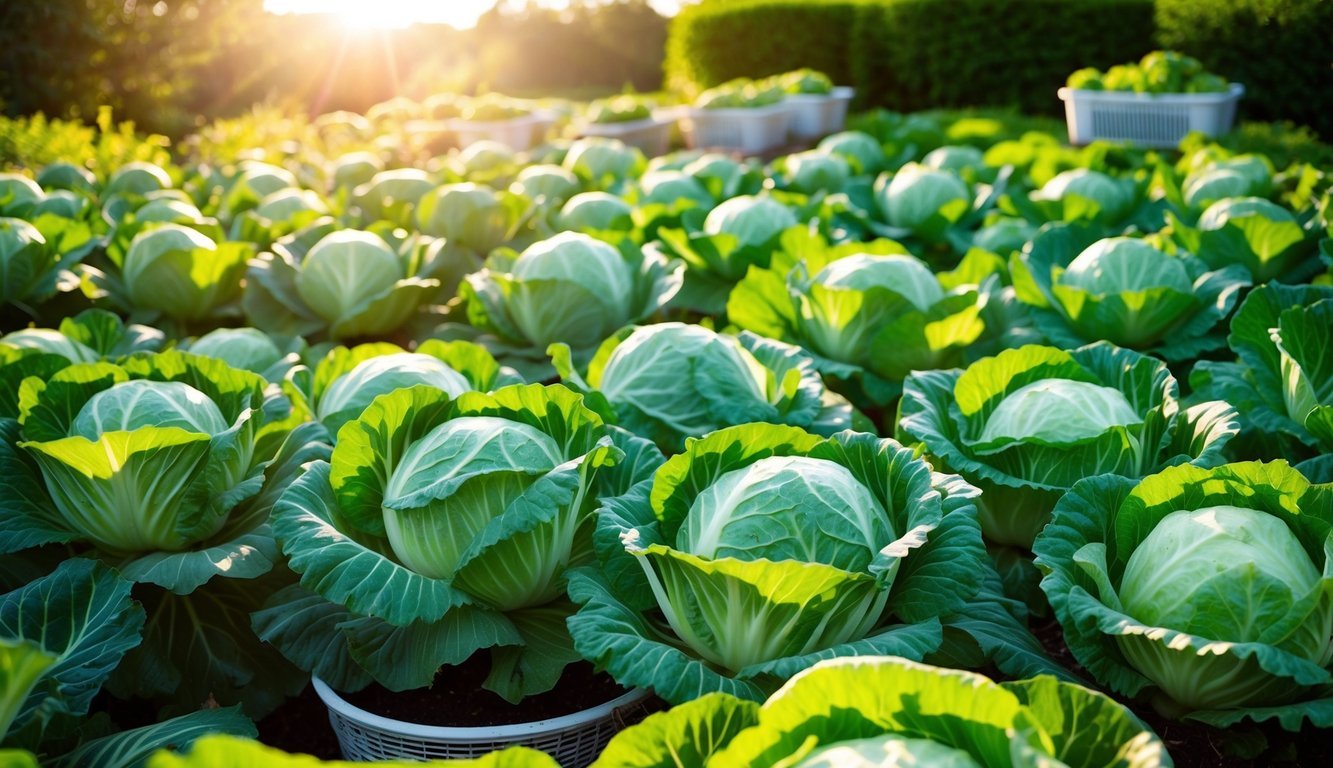
Cabbage is a hardy and versatile vegetable that thrives in a variety of growing environments, making it a popular choice among home gardeners.
Its ability to be preserved for extended periods makes it even more desirable.
Although cultivating cabbage may seem challenging for beginners, adhering to a few simple rules can lead to a plentiful yield.
I wasn’t a cabbage enthusiast at first, but after learning to grow my own organic cabbage, I now appreciate its nutritional value, long shelf life, and the simplicity of its cultivation.
Here are ten essential tips to help you grow a successful cabbage crop.
Planting and Timing
- CHOOSE THE RIGHT TIME TO PLANT
Cabbage flourishes in cooler temperatures, and heat can lead to issues like bolting or splitting heads.For those in areas with harsh winters, planting typically occurs in spring and fall.
Start seeds indoors about eight weeks before the last frost for spring crops, and for fall crops, sow them 14 weeks before the first frost.
Typically, seeds germinate within four to ten days and can last for up to four years.
If you live in a milder winter climate, such as Arizona’s low desert, winter can be an ideal season for growing cabbage.
- EXPERIMENT WITH DIFFERENT CABBAGE VARIETIES
If high temperatures threaten your traditional cabbage varieties, consider trying Oriental or Savoy cabbages, which tend to tolerate warmer conditions better.Head cabbage, known for its tightly packed green or red heads, comes in different maturity types: early, mid-season, and late.
Savoy cabbage features unique crinkled leaves and a looser structure, providing a sweeter flavor, while Oriental cabbage has a distinct elongated shape.
- PICK THE PERFECT LOCATION
Cabbage thrives in well-drained, nutrient-dense soil.Before planting, enrich the soil by adding compost and organic fertilizer.
A sunny spot is essential; while cabbage prefers cooler temps, it still needs bright sunlight for optimal growth.
Maintaining Growth and Health
- MAKE THE MOST OF YOUR GARDEN SPACE
Cabbage plants can spread widely, potentially overshadowing neighboring crops.In a square-foot gardening system, you might dedicate four squares to one cabbage plant.
To efficiently use space, position cabbage plants at the corners or edges of your garden beds.
- OPT FOR HEALTHY SEEDLINGS
When selecting seedlings, choose compact, strong transplants that show no signs of leggy growth or overcrowding.Keeping the seedlings well-hydrated is important to prevent them from becoming root-bound.
- BE AWARE OF COMMON PESTS AND DISEASES
Cabbage can fall prey to various pests and diseases.Keep an eye out for cabbage worms, slugs, cutworms, and even aphids, which can indicate plant stress due to water issues or excessive heat.
- MAINTAIN CONSISTENT MOISTURE
Reliable and steady watering is key to a thriving cabbage crop.Fluctuations in moisture can lead to stunted growth or cracked heads.
To retain soil moisture and keep temperatures down, apply a layer of mulch.
- DON’T FORGET THE NUTRIENTS
Cabbage plants are heavy feeders, consuming nutrients rapidly.After about two weeks in the ground, boost your young plants with fish emulsion and seaweed fertilizer to support robust growth.
Harvesting and Storage
- HARVEST AT THE RIGHT TIME
Timing is crucial when it comes to harvesting cabbage.Picking heads too late can result in cracks or splits.
Keep a close eye on your plants as maturity approaches and harvest when they’re just right.
- STORAGE FOR LONGER FRESHNESS
To keep your harvested cabbage fresh, strip away any outer leaves, wrap the heads in a damp paper towel, and place them in a plastic vegetable bag.This method ensures your cabbage can stay crisp in the refrigerator for one to two months or even longer.
Now you’re equipped to enjoy a successful cabbage harvest! Happy growing!
Source: Growinginthegarden

